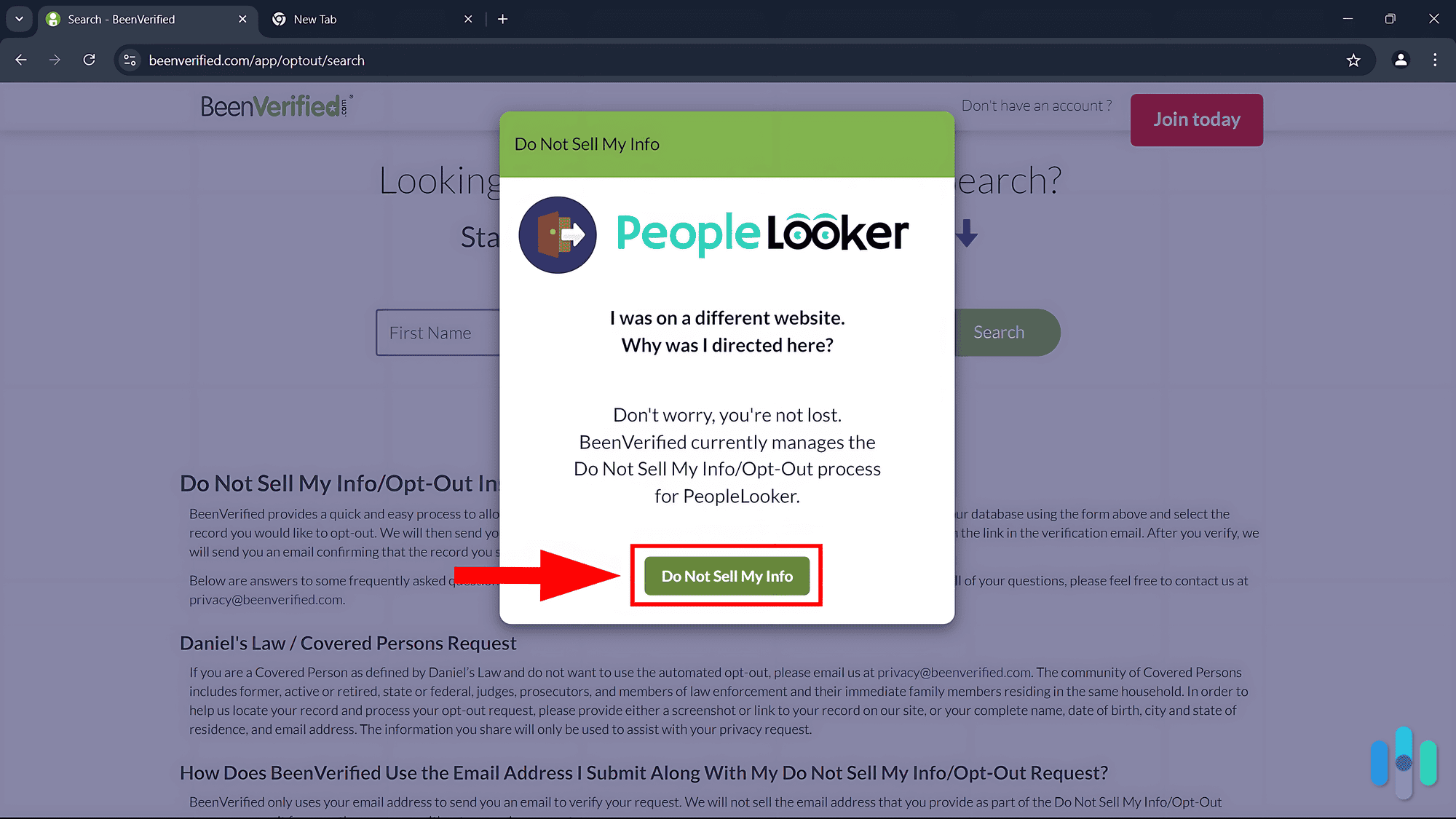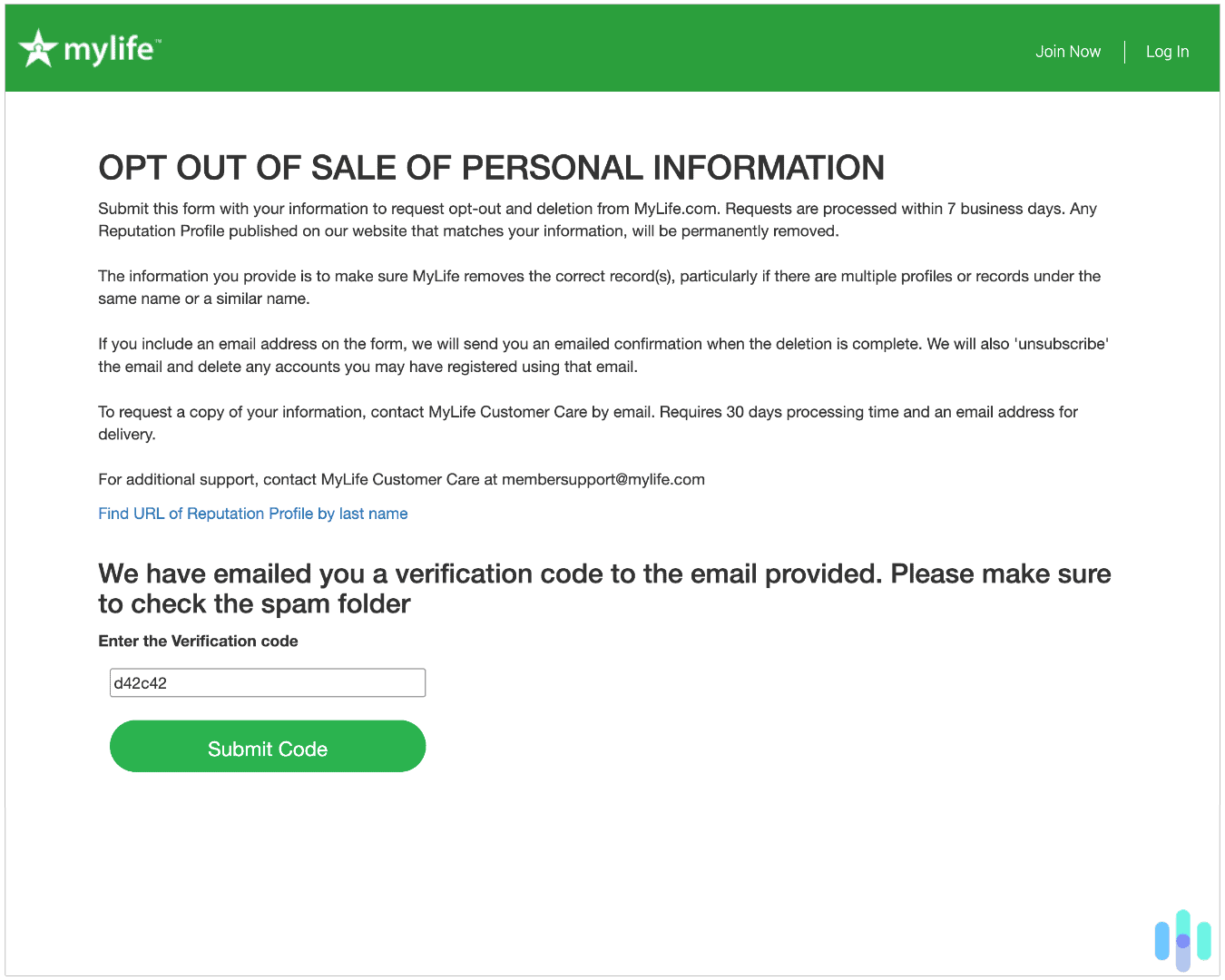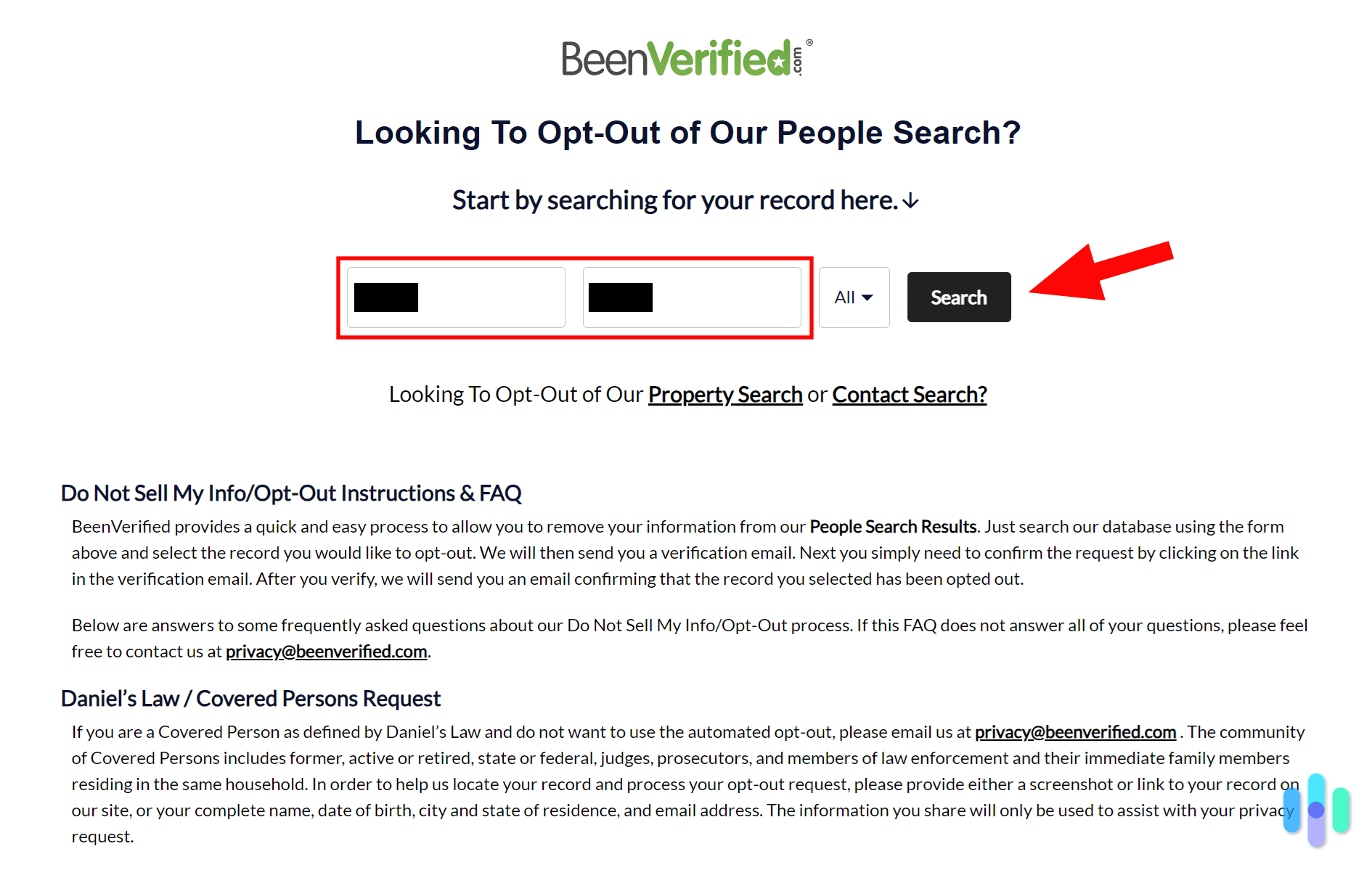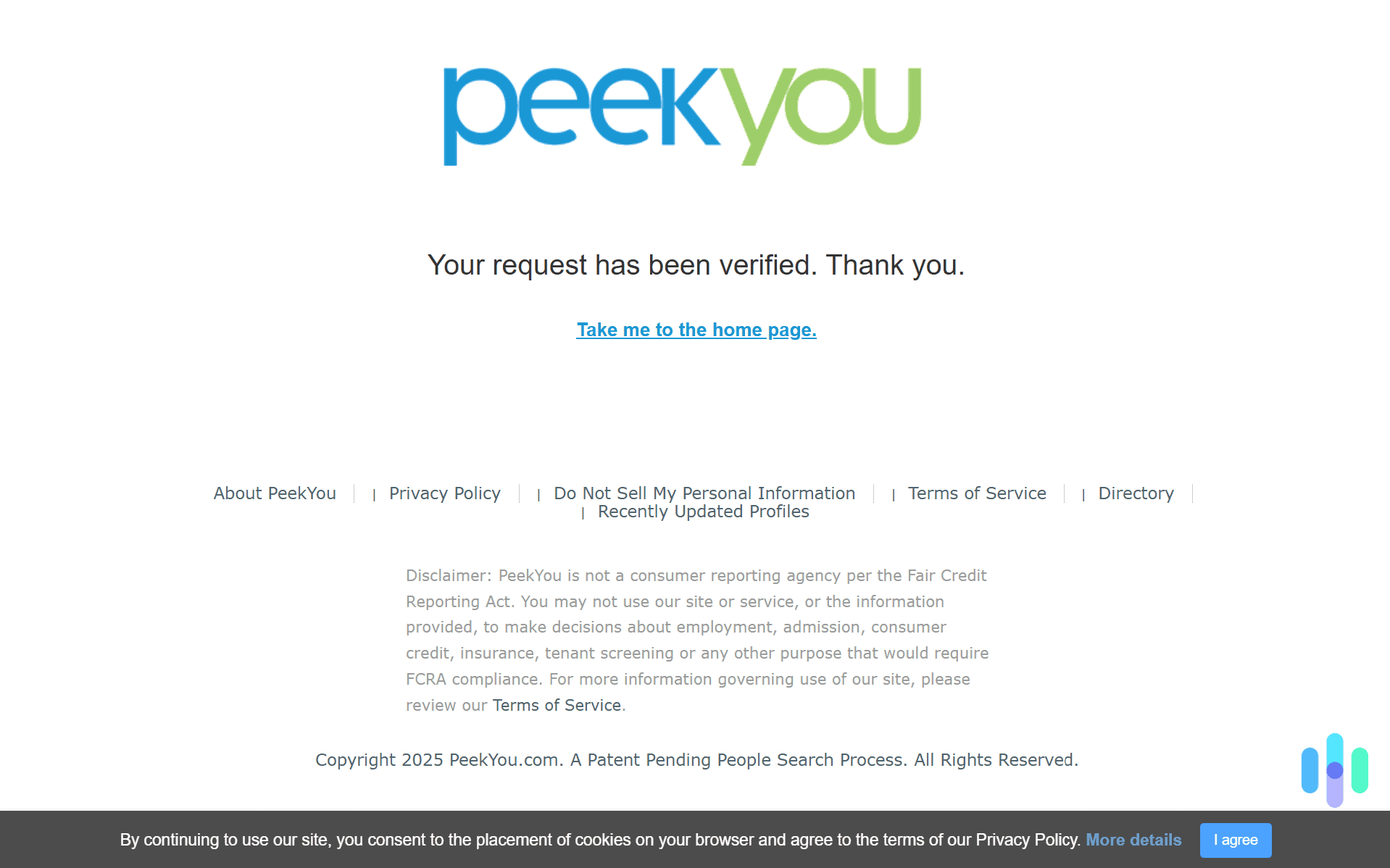Data brokers like Spy Dialer occupy a gray area of the web. They’re not technically stealing data because the information they collect is public, but they’re definitely providing more of a disservice than a service to our online privacy. The phone number they help us find today could be our phone number in the hands of an identity thief tomorrow.
Fortunately, there’s a way to scrub your personally identifiable information (PII) from Spy Dialer’s database. In this guide, we’ll show you how Spy Dialer works and how you can get them to remove your data. If you’d like a little extra help, we’ll also introduce some data removal services that offer a more comprehensive solution to any data broker problems you run into.
FYI: A little digging revealed that Spy Dialer works with both listed and unlisted phone numbers. That means even if you’ve made efforts to keep this personal information hidden, Spy Dialer may still have it.
What is Spy Dialer?
Spy Dialer is a free online service that helps you track down the names of anonymous callers through “reverse phone number lookup.” Essentially, they’re matching the phone number you give them to a name in their database. It’s just like the Whitepages but backward. It can even be useful. If you receive a suspicious text or call, you can identify the caller in seconds.
To Spy Dialer’s credit, they don’t give out full addresses or phone numbers (if you don’t already have them). But it’s still a data broker that gathers reams of our data without our consent. And as with any data, there’s always the chance it could end up in the hands of fraudsters and predators. For that reason, we recommend removing your personal details from Spy Dialer’s database. Here’s how to do it.
Pro Tip: The giant checkbox in the bottom left corner of Spy Dialer’s website is actually an opt-out button. Click on it and you can begin the opt-out process.
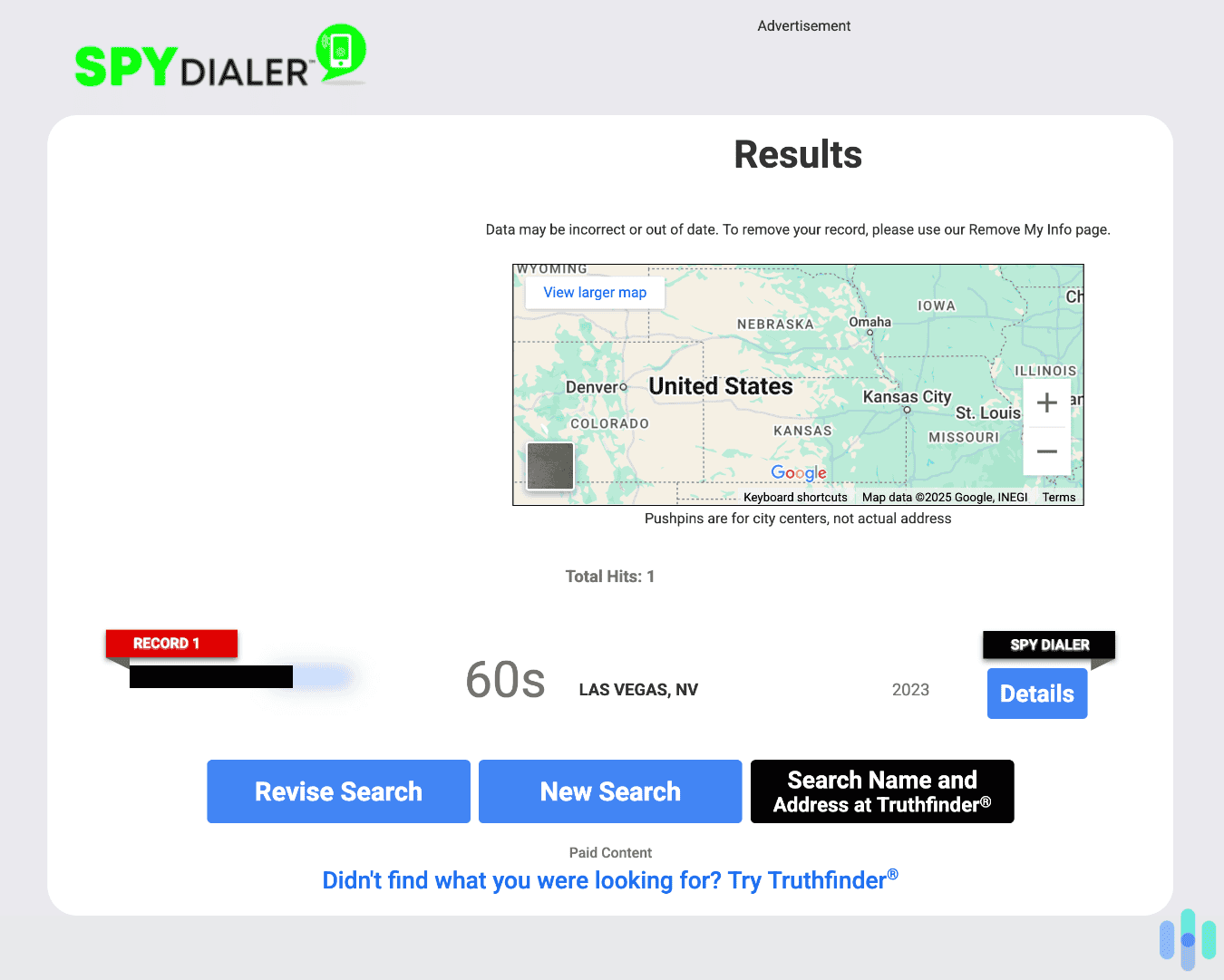
How to Opt Out of Spy Dialer
Spy Dialer didn’t make us jump through any hoops to remove our data. Links and buttons to do so are everywhere on the website. We appreciated this, especially after our experience opting out of MyLife, which was substantially more time-consuming and tricky. Here’s what you need to do.
1. Click the Do Not Sell or Share My Personal Information link in the footer. There’s also a button beneath the footer links and another link in the FAQ. Clicking any of these brings you to a page with a big “Start” button front and center. Click on the button.
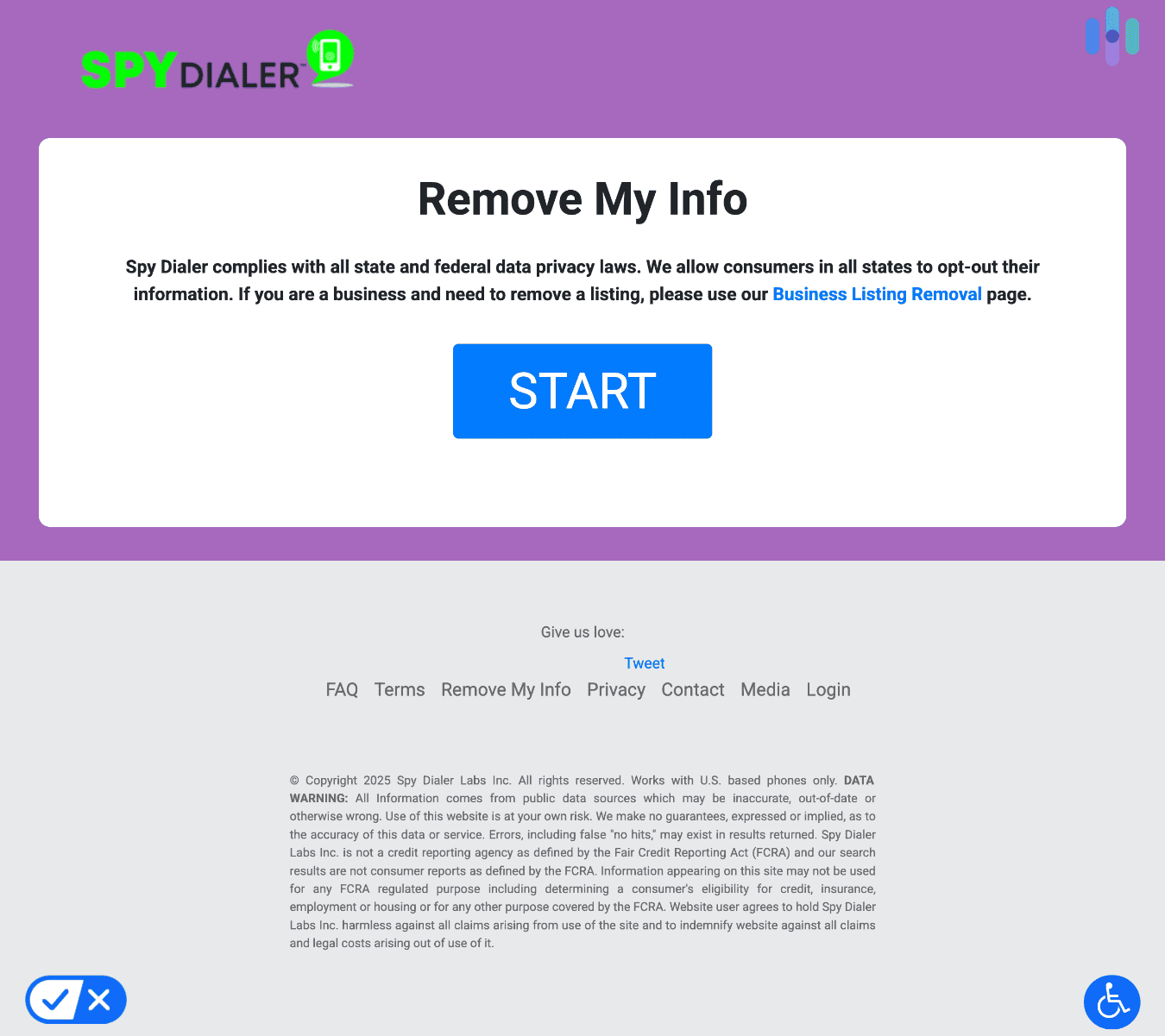
2. Give Spy Dialer the state where you live. Don’t worry, you aren’t divulging any data they don’t already have. This is just a way for Spy Dialer to make sure they’re deleting your data and not the data of another person living in another state with your name.
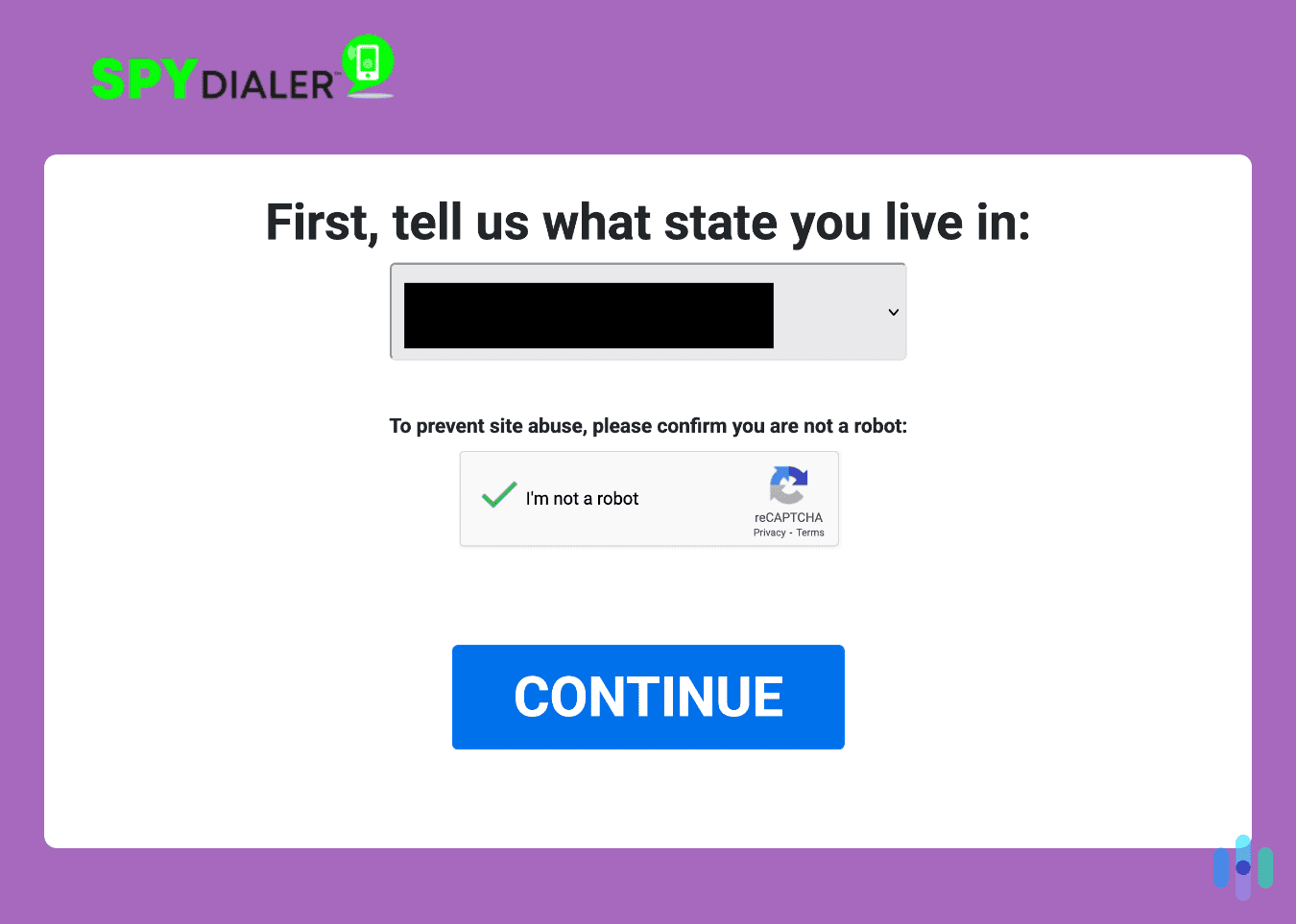
Pro Tip: We happened to live in a state that gives pretty free reign to data brokers. Spy Dialer let us know that legally they weren’t obligated to remove our data but were honoring our request despite that.
3. Fill out the rest of the form. We gave Spy Dialer our name and address and that was enough. We didn’t have to fill out any other fields. We recommend you do the same. With data brokers, the less you give, the better.
4. Click the Opt-Out My Info button. Once you click the red button, you’re just about done.
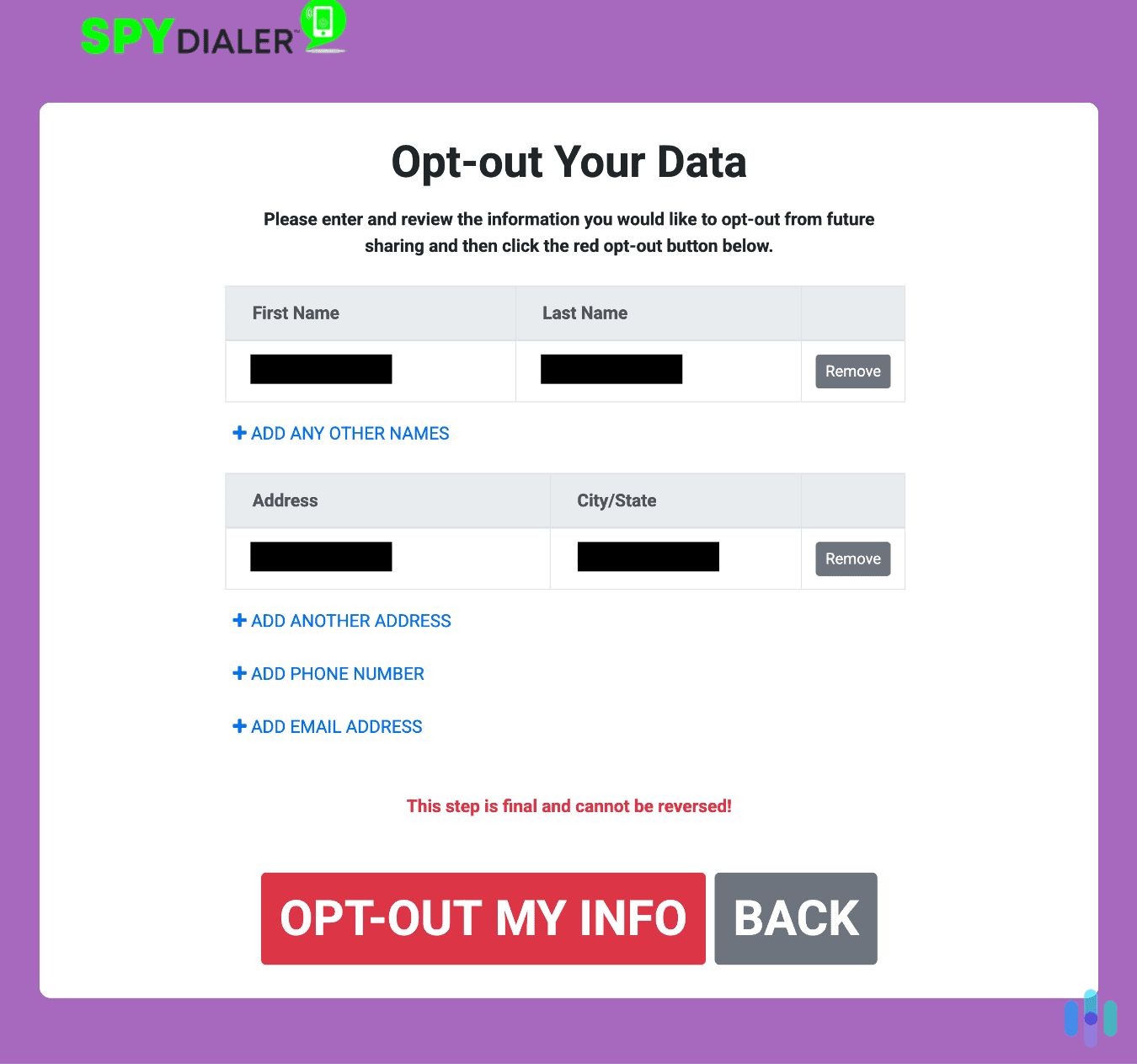
5. Wait for the confirmation screen. Our opt-out confirmation came instantly. Some people search sites can take up to two weeks to process data removal requests. In our experience, though, it usually takes about a day or two, as was the case when we opted out of PeopleFinders.
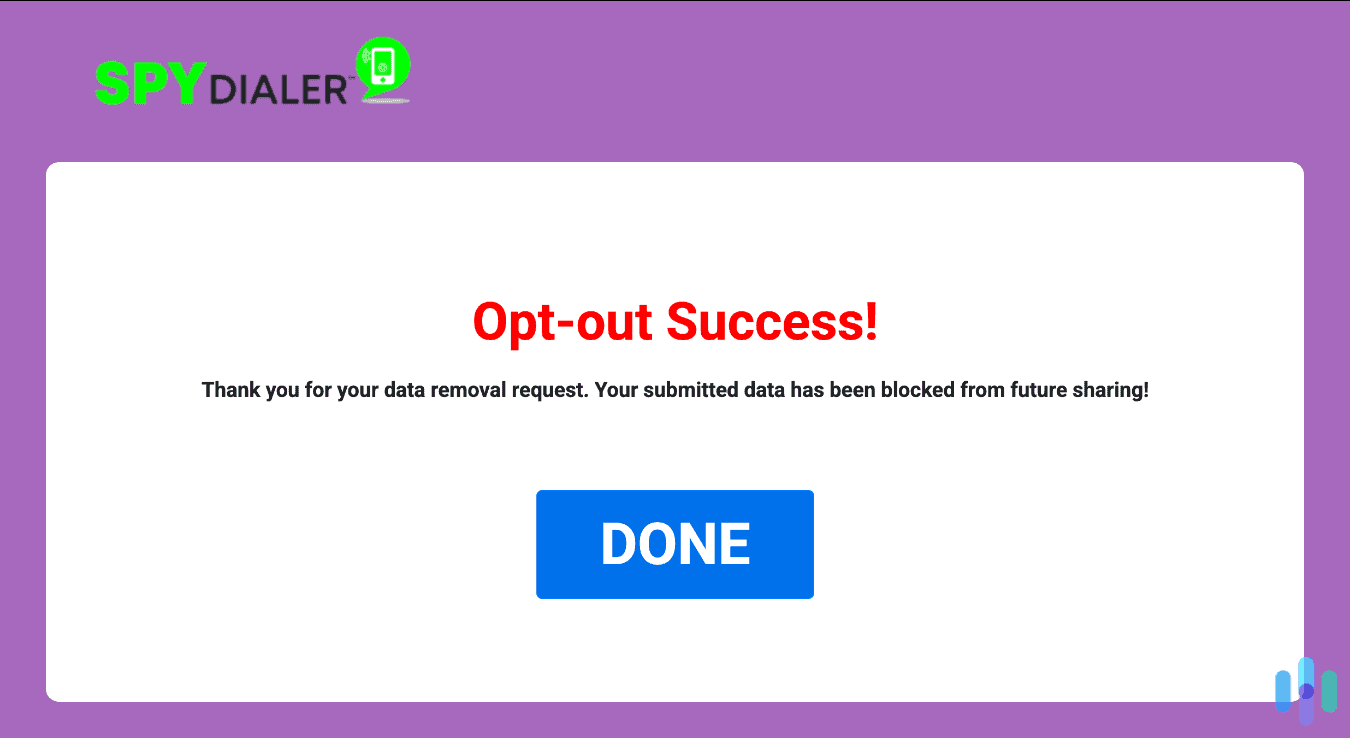
FYI: Our opt-out request actually worked. We know because we revisited Spy Dialer a day later and ran a search to make sure our profile was actually gone (see below). We recommend you do the same.
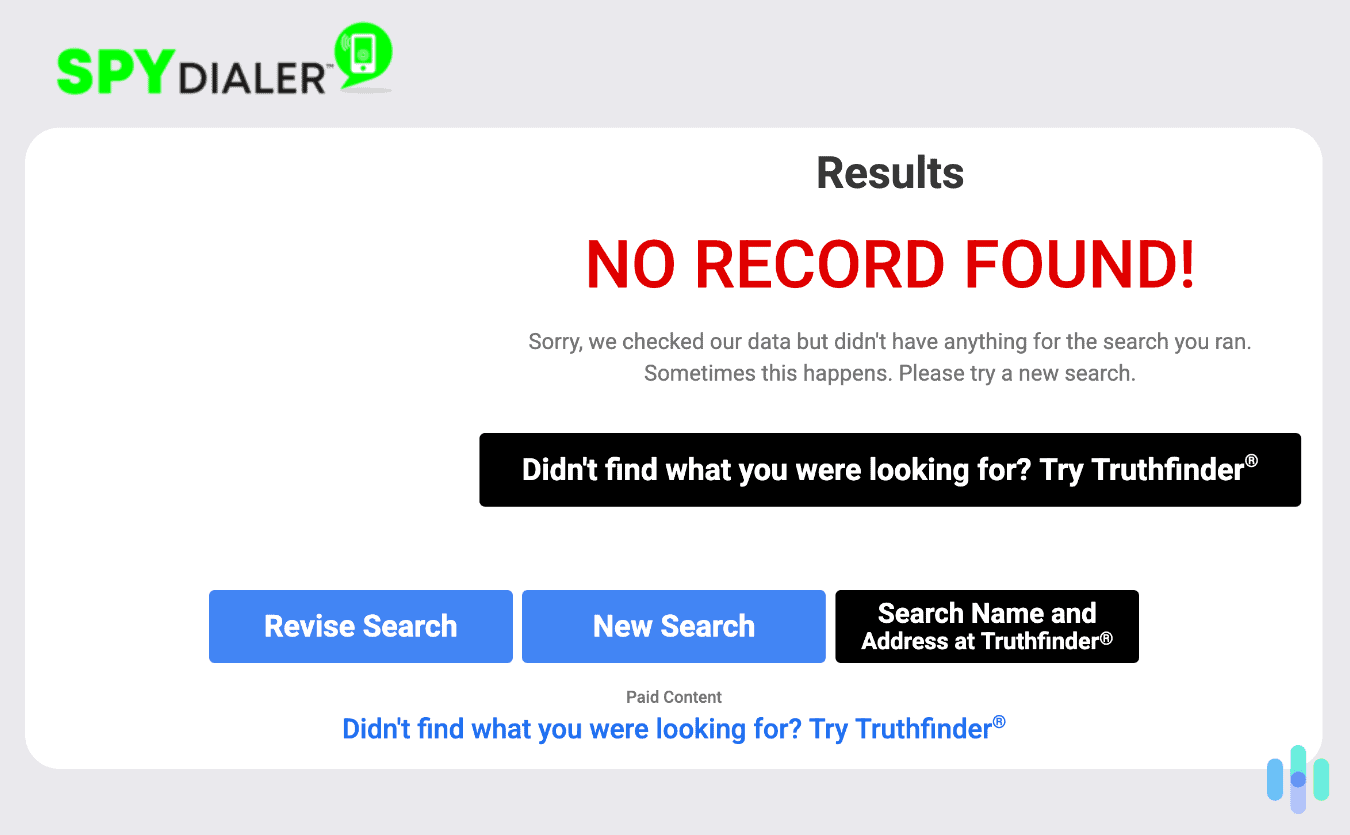
Opting Out of Spy Dialer Using a Data Removal Service
As we’ve seen, DIY data removal is possible, but it has two main obstacles. Data brokers like Spy Dialer aren’t breaking any laws, so they aren’t required to remove our data permanently. If we take it down on Tuesday, it could be back up by Friday.
The other issue with opting out by yourself is that Spy Dialer is one of the hundreds of people search sites operating in the country. Can you personally scrub your records from all of them? Probably not.
Aura’s data removal service scans the internet for your personal data, sends removal requests autonomously, and continuously monitors these sites in case they relist your data.

The key advantages of premium data removal services are speed, reach, and safety. The process is automated so it’s quick and can target data brokers in bulk. Critically, data removal services also check back periodically to make sure your personal details stay hidden so thieves can’t find them. All you’ve got to do is sign up, give them your details, and wait for the opt-outs to do their work.
FYI: Most data removal services automate their processes to save time. For instance, Incogni, the service that performed best in our tests, hit 129 brokers in a week. Others, like DeleteMe, are human-powered and work slower but do eventually cover more terrain. For a more detailed look at the two services, here’s our DeleteMe vs. Incogni comparison guide.
Why You Should Opt Out of Services Like Spy Dialer
Spy Dialer isn’t the most invasive of the people search sites we’ve researched. However, armed with just a name and phone number (from Spy Dialer), a seasoned criminal can find out where you live, when you were born, if you own any property, and who you’re married to. They can find all that — and more. Opting out of Spy Dialer:
- Reduces the risk of identity theft. Identity thieves use services like Spy Dialer to find their next victims. The fewer of your personal details circulating, the lower your odds of being targeted.
- Protects your privacy. As we mentioned up top, even if your phone number is unlisted, Spy Dialer can find it and make it available. Opting out will keep your number hidden.
- Keeps scammers at bay. Like identity thieves, catfish and other scammers comb people search sites for information they can use to prey on their next marks. They can’t use what they can’t find.
Did You Know: If you were wondering if Spy Dialer can catalogue numbers on the National Do Not Call Registry, the answer is yes, they can. According to Spy Dialer, the National Do Not Call Registry only protects us from “unsolicited commercial messages,” not from unsolicited data brokers.
Recap
Spy Dialer may come in handy if you’re getting spammed by phone or you want to verify someone’s identity on the fly. But the limited service it provides isn’t worth the broad risks it poses to our internet safety. Simply put, Spy Dialer is one more clearinghouse for our private data with an open door to crooks, including identity thieves.
Fortunately, it’s easy to opt out of Spy Dialer. We did it in a few minutes, and it worked. At least for a day. But eventually our phone number will be back on Spy Dialer’s list. Ditto for any data we remove from any of the hundreds of people search sites we opt out of. That doesn’t mean we recommend throwing in the towel. But we do think a data removal service probably makes a lot more sense over the long run.
FAQs
-
Is Spy Dialer legal?
Yes, it’s a legal service because Spy Dialer amasses its data from public records.
-
Does Spy Dialer have my unlisted phone number?
It may. Spy Dialer prides itself on being able to track down any numbers, including unlisted ones.
-
How can I remove my phone number from Spy Dialer?
Click the Do Not Sell or Share My Personal Information link at the bottom of Spy Dialer’s website and follow the instructions.
-
Is Spy Dialer free?
Yes, but there’s a 50-lookup limit.
-
Can I find email addresses on Spy Dialer?
No, you can’t find someone’s email address, but if you have an address, Spy Dialer can help you find the person it belongs to.



